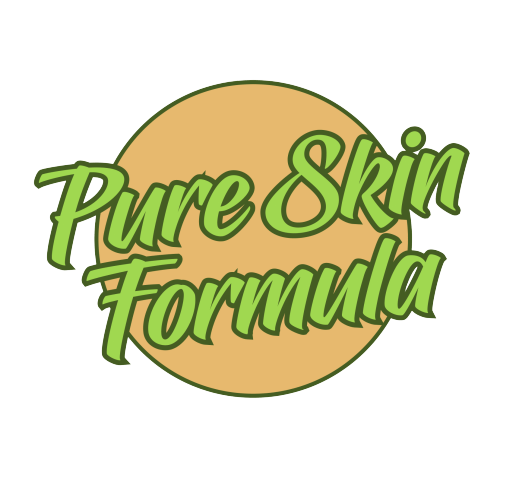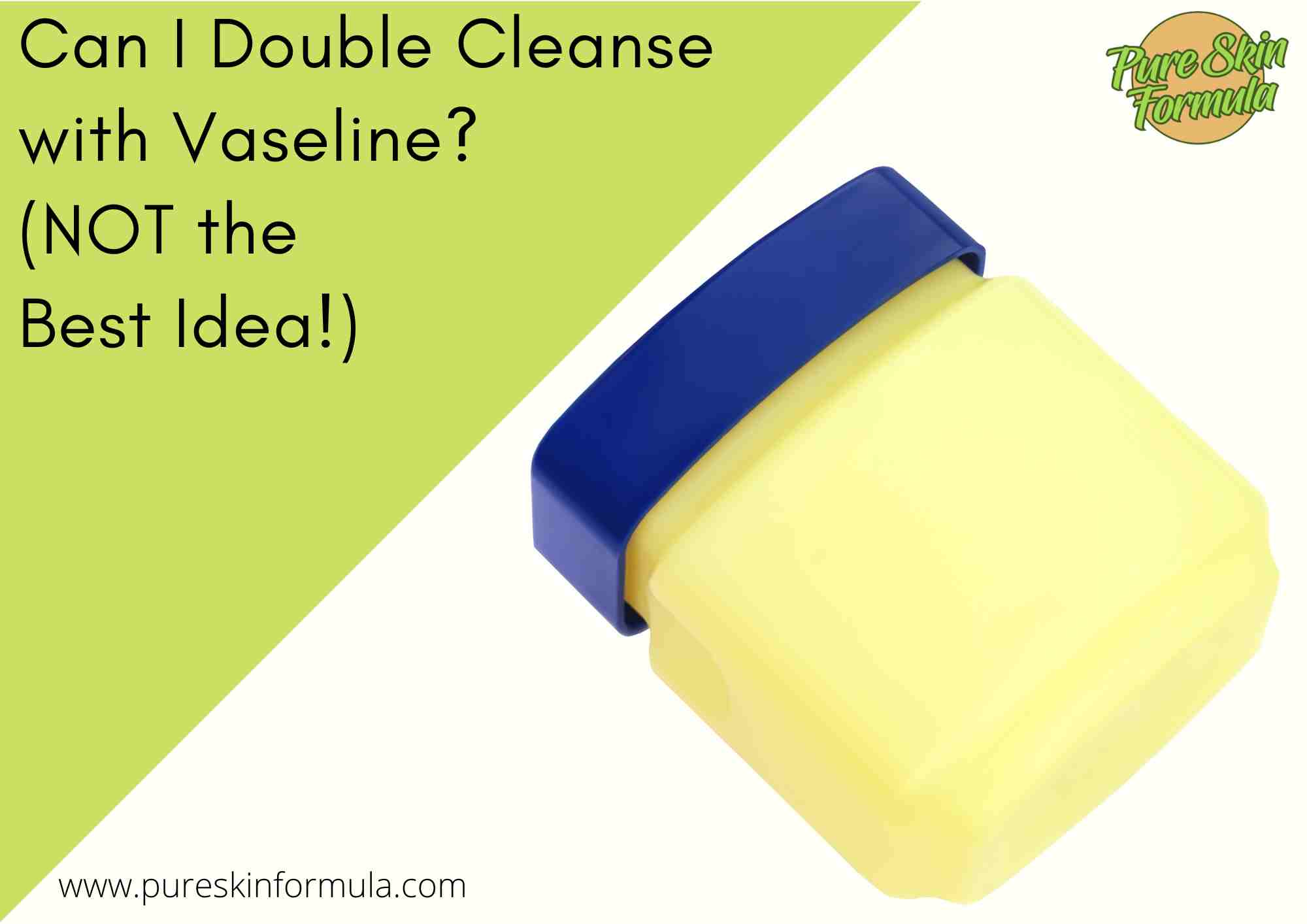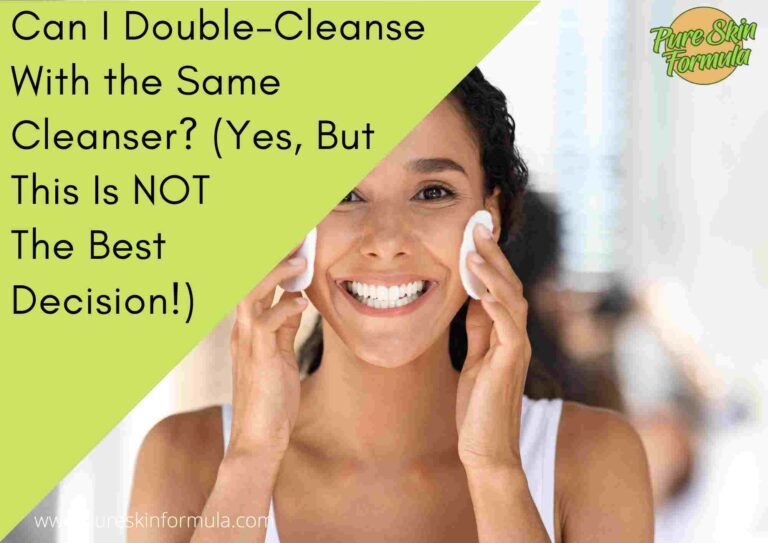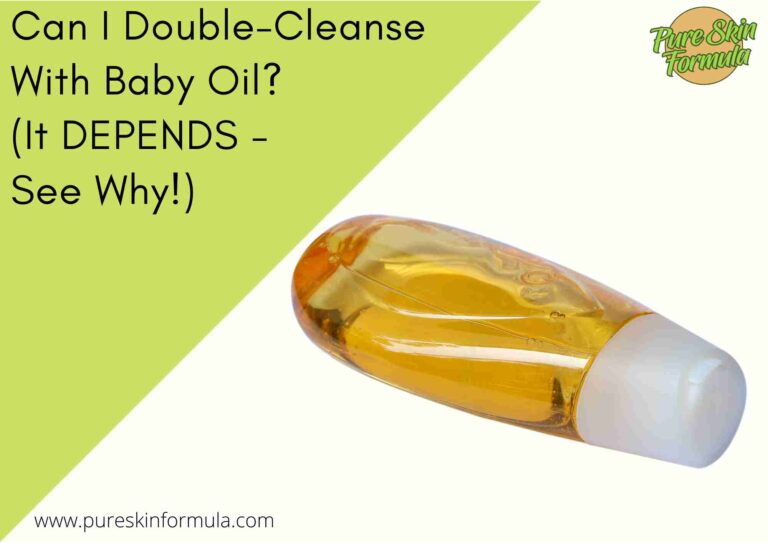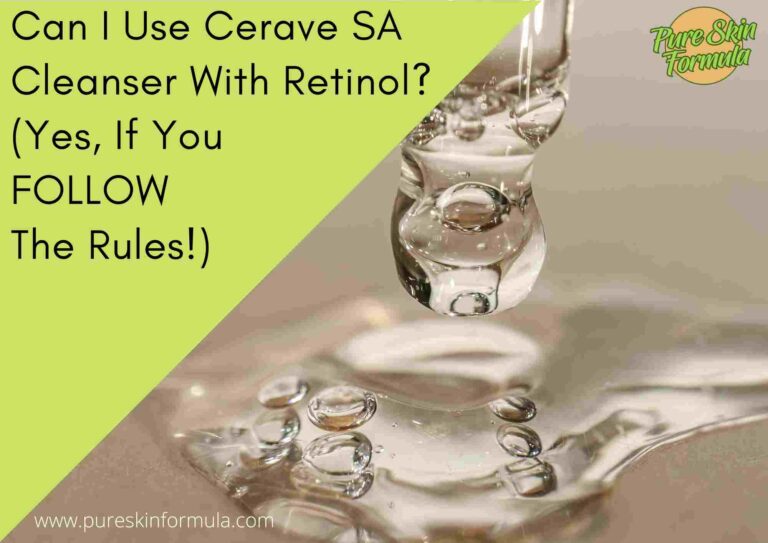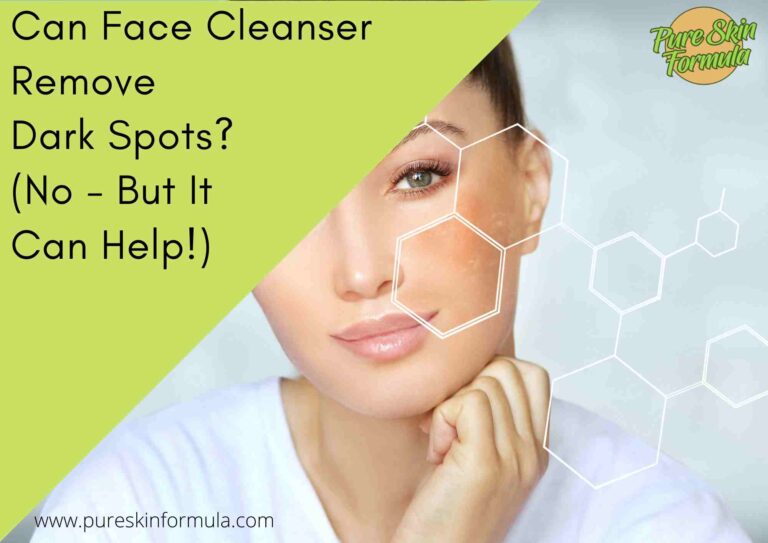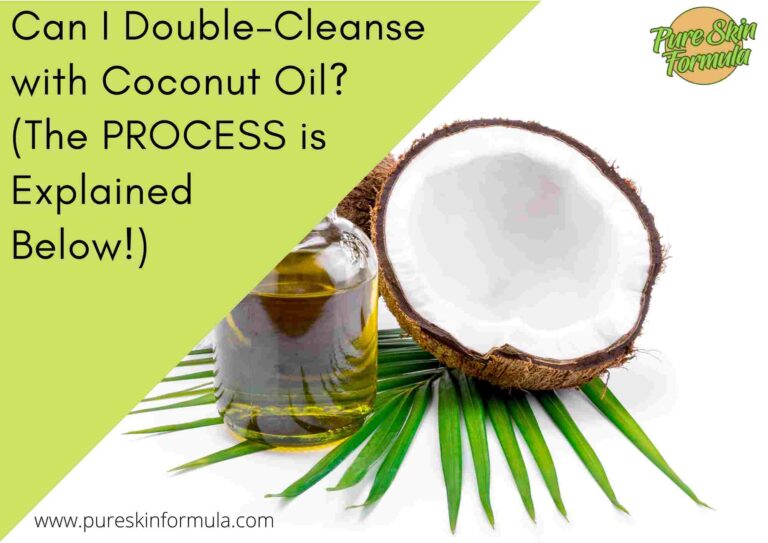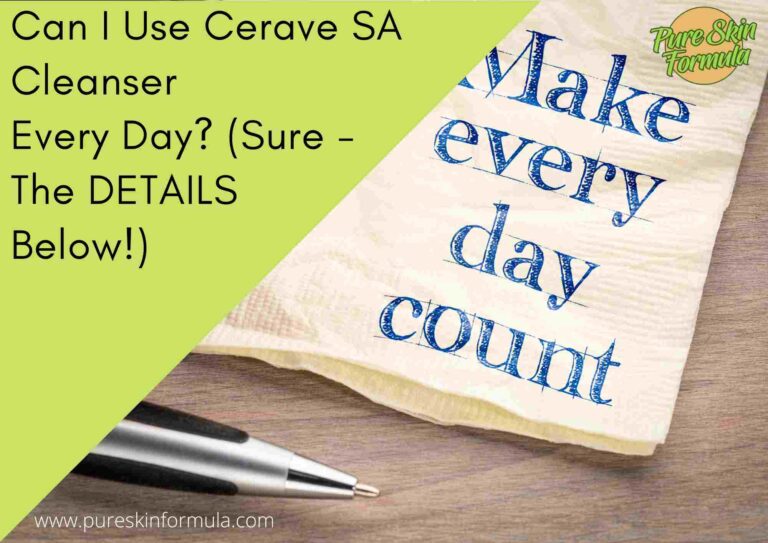Today, I will discuss a skincare practice that has deep roots in beauty routines worldwide: double cleansing. This isn’t just about washing your face twice; it’s an approach that will include two distinct steps designed to thoroughly remove makeup, sunscreen, and the day’s grime.
I’ll also delve into where Vaseline, a household staple known for its myriad uses, fits into this equation. Vaseline, or petroleum jelly, has been a go-to for skin protection and healing for over 140 years. You’ll learn about its unique attributes, making it a contender in your nightly skincare regimen.
Can I double cleanse with Vaseline?
No, Vaseline isn’t suitable for double cleansing. Double cleansing typically involves using an oil-based cleanser followed by a water-based one to remove makeup, dirt, and excess oils.
As a petroleum jelly, Vaseline doesn’t emulsify with water and can be difficult to rinse off, potentially clogging pores. Instead, opt for a dedicated oil-based cleanser formulated for double cleansing and a water-based cleanser for thorough cleansing without leaving residue.
Let’s go into detail.
What is Vaseline’s role in skincare?
Vaseline, also known as petroleum jelly, is a blend of mineral oils and waxes that form a semisolid jelly-like substance. It’s been around since 1872 and is famously used for its healing properties.
Thanks to its ability to create a protective barrier on the skin surface, Vaseline locks in moisture and aids in recovery from minor cuts and burns.
Now, why does the texture and occlusiveness of a skincare product matter, especially when cleansing? Imagine Vaseline’s thick, gooey texture. This is crucial because when applied, it forms a physical barrier that can protect the skin and trap substances against it.
In cleansing, especially the first step of double cleansing, you want something that can dissolve and lift away dirt, makeup, and excess oils.
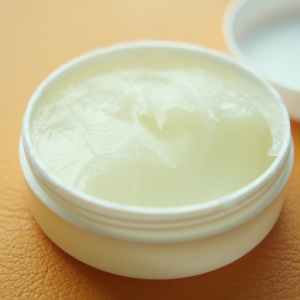
A lot is happening quickly in the skincare world, with innovative products and regimens constantly popping up. This means plenty of misconceptions are circulating about what’s good for your skin and what’s not.
Vaseline has been at the center of many debates, with some folks swearing by its moisturizing power and others concerned about its potential to clog pores. It’s important to remember that Vaseline itself is non-comedogenic, meaning it shouldn’t clog pores or cause acne.
However, because it’s so occlusive, if any pore-clogging agents are already on the skin, like dead skin cells or excess sebum, it might trap them underneath.
That’s why the method of cleansing you choose should consider your skin type and specific needs. If you’re pondering whether Vaseline can play a role in your skin cleansing routine, you’re in the right place.
I’ll investigate whether you can double cleanse with Vaseline and what that might mean for different skin types.
What are the pros and cons of double cleansing with Vaseline?
Vaseline is a maverick in the skincare world. It’s occlusive, which means it forms a barrier on the skin that locks in moisture. This is fantastic for healing dry, chapped skin, but when it comes to cleaning, it’s not so straightforward.
If you’re considering using Vaseline as the first step in your double cleanse, it’s important to note that its dense, waxy texture doesn’t play well with water. Unlike typical oil cleansers that emulsify with water and rinse away easily, Vaseline tends to stick around. That said, it could dissolve oil-soluble impurities, makeup, and sunscreen, which you want in a first cleanse.
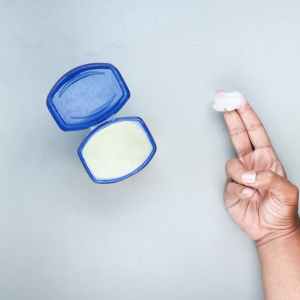
However, because it’s so good at sticking to your skin (a blessing for creating a moisture shield but a curse for easy removal), you’ll need a strong second cleanser. This follow-up product must cut through the Vaseline’s thick layer without stripping your skin’s natural oils.
This could be more challenging if you have oily or acne-prone skin, whereas Vaseline’s stubborn nature might contribute to clogged pores.
Dermatologists have mixed opinions. Some suggest that, with caution and the right skin type, Vaseline can effectively remove stubborn, waterproof makeup as part of a double cleansing method.
Others are hesitant, warning that Vaseline could potentially trap debris and bacteria against the skin, especially if not followed by a thorough cleansing.
Now, it’s also worth considering accessibility and why you might reach for Vaseline. It could be already in your medicine cabinet, or you’re looking for a budget-friendly option. Vaseline is undeniably cost-effective and widely available, making it an accessible choice for many.
Ultimately, your skin type and the rest of your skincare lineup play huge roles in determining if Vaseline is right for you. Dry and sensitive skin might rejoice at the extra moisture, while oilier types might want to steer clear. Always listen to your skin—it’s the best gauge you have.
Best practices for double cleansing with Vaseline
Now that you know the ins and outs of using Vaseline in a double cleansing routine, it’s time to put that knowledge into practice. Here’s a step-by-step guide to ensure that your skin reaps the maximum benefits:
Begin with dry skin and apply a thin layer of Vaseline, gently massaging it over your face. This will help to break down makeup and sunscreen without harsh tugging.
Remove the Vaseline with a warm, damp washcloth, which will assist in lifting away the product along with any dissolved impurities.

Follow up with a gentle, water-based cleanser to effectively remove any remaining oil residue and thoroughly cleanse the skin.
In my opinion, always choose a second cleanser tailored to your skin type for a customized, effective routine.
Consider doing a patch test before incorporating Vaseline into your regimen for sensitive skin, as you would with any new skincare product.
Don’t worry too much about the initial greasy feel; with proper removal, your skin should not be left feeling heavy or congested.
You can always adjust your approach down the road, but starting with small amounts of Vaseline is a good bet.
If Vaseline isn’t yielding the results you’re looking for, explore other oil-based cleansers. These are formulated specifically for deep cleaning, and there’s a plethora to choose from.
And remember, proper skincare is all about consistency and patience. Your first attempt doesn’t need to be your last – tweak your technique and listen to what your skin tells you.
Final thoughts
While Vaseline is a reliable occlusive agent for locking in moisture and protecting the skin’s barrier, it’s not designed for double cleansing. Double cleansing typically involves using two different types of cleansers to thoroughly remove makeup, dirt, and impurities from the skin.
Instead, consider incorporating a dedicated oil-based cleanser followed by a water-based one into your skincare routine for optimal cleansing without the risk of pore congestion. By choosing products tailored to double cleansing, you can effectively maintain clean, refreshed skin and support its overall health and vitality.
Thank you for reading!
Valeria
